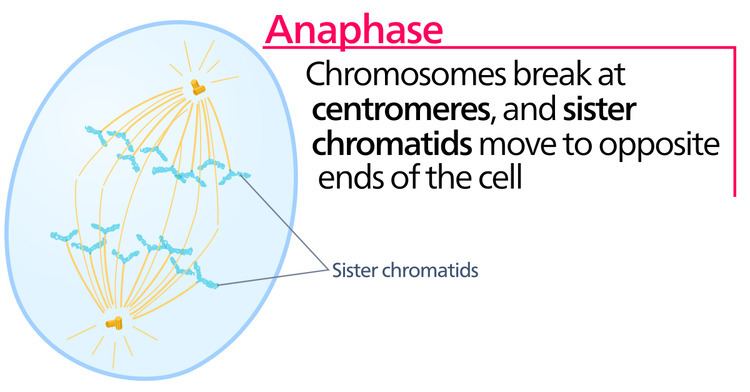 | ||
Anaphase (from the Greek ἀνά, "up" and φάσις, "stage"), is the stage of mitosis after the metaphase when replicated chromosomes are split and the daughter chromatids are moved to opposite poles of the cell. Chromosomes also reach their overall maximum condensation in late anaphase, to help chromosome segregation and the re-formation of the nucleus.
Anaphase starts when the anaphase promoting complex marks an inhibitory chaperone called securin with ubiquitin for destruction. Securin is a protein which inhibits a protease known as separase. The destruction of securin unleashes separase which then breaks down cohesin, a protein responsible for holding sister chromatids together. The centromeres are split, and the new daughter chromosomes are pulled toward the poles. They take on a V-shape or Y-shape as they are pulled back.
While the chromosomes are drawn to each side of the cell, the non-kinetochore spindle fibers push against each other, in a ratcheting action, that stretches the cell into an oval.
Once anaphase is complete, the cell moves into telophase.
Relation to the cell cycle
Anaphase accounts for approximately 1% of the cell cycle's duration. It begins with the regulated triggering of the metaphase-to-anaphase transition. Metaphase ends with the destruction of B cyclin. B cyclin is marked with ubiquitin which flags it for destruction by proteasomes, which is required for the function of metaphase cyclin-dependent kinases (M-Cdks).
